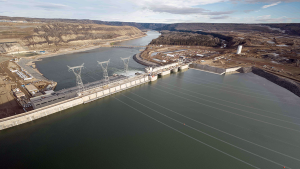Although their predictions and analysis couldn’t be described as bullish, a panel of four construction industry leaders conveyed a mood of cautious confidence at the recent annual meeting of the Council of Ontario Construction Associations (COCA) in Toronto.
Leaders have concerns about stimulus wind-up
Although their predictions and analysis couldn’t be described as bullish, a panel of four construction industry leaders conveyed a mood of cautious confidence at the recent annual meeting of the Council of Ontario Construction Associations (COCA) in Toronto.
But they acknowledged the industry faces major challenges such as the looming labour shortage, increased government regulations, new technologies and the entry of multi-national corporations into the Canadian construction market, notably into the growing public-private partnerships (P3) field.
“We’re focusing on new technologies and increased awareness of environmental issues,” said Domenic Mattina, vice-president of sales for family-owned Mattina Mechanical Ltd. when asked how his Hamilton, Ont. firm is preparing for those challenges.
As an example of how the company is adapting to more stringent tender conditions and requirements subcontractors become more active participants in the design stage, Mattina pointed out he has three professional engineers on staff.
“Ten years ago we didn’t have any,” he said.
A COCA board director, Mattina was responding to a series of questions posed by government relations vice-president and panel moderator David Zurawel.
They were designed to gauge the panel’s reaction on how the global recession has impacted their businesses and the issues they foresee affecting the industry as Canada pulls out of the economic downturn.
A consistent theme during the discussion was the possible threat the Canadian economy could fall right back into the recession once the federal government infrastructure stimulus program ends.
“What are your concerns about a double dip and if (you’re concerned) how are you preparing for it?” asked Zurawel.
“As a subcontractor we’ve maintained a backlog of projects. We are concerned though about what happens when the infrastructure money ends,” said Sam Costa, president of C&T Reinforcing Steel.
Even so, the reinforcing steel sector may not have sufficient manpower if publicly funded projects coincide with a return of private building, said Costa.
“We’re starting to see the condo market come back. We’re facing a labour problem and the amount of rodmen might not be sufficient.”
The chief executive officer of Bird Construction Company told the audience he isn’t “particular troubled” by the possibility of a double dip.
At the same time, however, Paul Raboud said the economy could lag from the period the government stimulus ends until there is a pick-up in the commercial sector.
A more pressing immediate concern is the pressure imposed by the stimulus program’s short deadline, said Raboud.
“The so-called shovel-ready projects were only napkin-ready. The schedules are ridiculous.”
Rather than an inability of the construction industry, the main stumbling block to meeting those deadlines is the time various governments need to complete environmental and other regulatory approvals, explained James Zippel, vice-president of building services with EllisDon.
“I don’t think the system can go as fast as builders.”
There were some mixed replies when the moderator asked the speakers about their successes and failures with public-private partnerships or Alternative Financing and Procurement (AFP) as it’s known in Ontario.
“We’ve had success. But you have to obtain a high hit rate,” said Zippel, briefly referring to the tremendous design, legal, financing, and other costs P3 projects pose for contractors and other consortium participants.
Asked if there was a way smaller contractors could pursue P3s, Raboud said, “It doesn’t make sense to pursue projects under $50 million.”
While denouncing the “grotesque” risk transfer often pushed on to contractors and their P3 partners, Raboud also said that P3s have been the catalyst for many projects that wouldn’t have been built otherwise.
If there was unanimity among the panel members it was expressed in their belief that most owners and contractors adhere to ethical standards in the tendering process.
“Tendering is a tough practice,” said Mattina. “But I don’t think there are many price shoppers about. Most (clients) are on the up and up.”
The panel also agreed the sustainability is not a passing fad and that there will be a continued emphasis on designing and constructing buildings which are environmentally friendly and energy efficient.
To a large extent, the atmosphere at the meeting had been established earlier in the day by guest speaker, Warren Jestin, chief economist with Scotiabank.
While there are still many hurdles and potential stumbling blocks, the Canadian economy is slowly improving, he said.
“The good news is that there is less bad news. Confidence is coming back.”











Recent Comments
comments for this post are closed